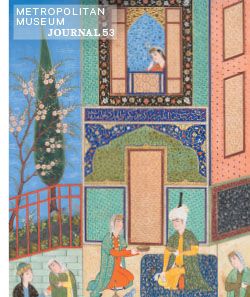Cylinder seal
Not on view
Although engraved stones had been used as early as the seventh millennium B.C. to stamp impressions in clay, the invention in the fourth millennium B.C. of carved cylinders that could be rolled over clay allowed the development of more complex seal designs. These cylinder seals, first used in Mesopotamia, served as a mark of ownership or identification. Seals were either impressed on lumps of clay that were used to close jars, doors, and baskets, or they were rolled onto clay tablets that recorded information about commercial or legal transactions. The seals were often made of precious stones. Protective properties may have been ascribed to both the material itself and the carved designs. Seals are important to the study of ancient Near Eastern art because many examples survive from every period and can, therefore, help to define chronological phases. Often preserving imagery no longer extant in any other medium, they serve as a visual chronicle of style and iconography. The modern impression of the seal is shown so that the entire design can be seen.
Lengthy inscriptions are one of the features of Kassite period cylinder seals and can be seen on this cylinder. Writing covers the entire surface of the stone, save a single row of four fly-like symbols that face the top line of the inscription. Unlike many Kassite period inscriptions, which favor the long-dead Sumerian language, this inscription was written in the contemporary Akkadian language. Dedicated to Gula, the goddess of healing, the inscription uses poetic language to describe the goddess’s powers. Cylinder seals were often imagined to have protective qualities, a function accentuated by the inscription.
This image cannot be enlarged, viewed at full screen, or downloaded.


